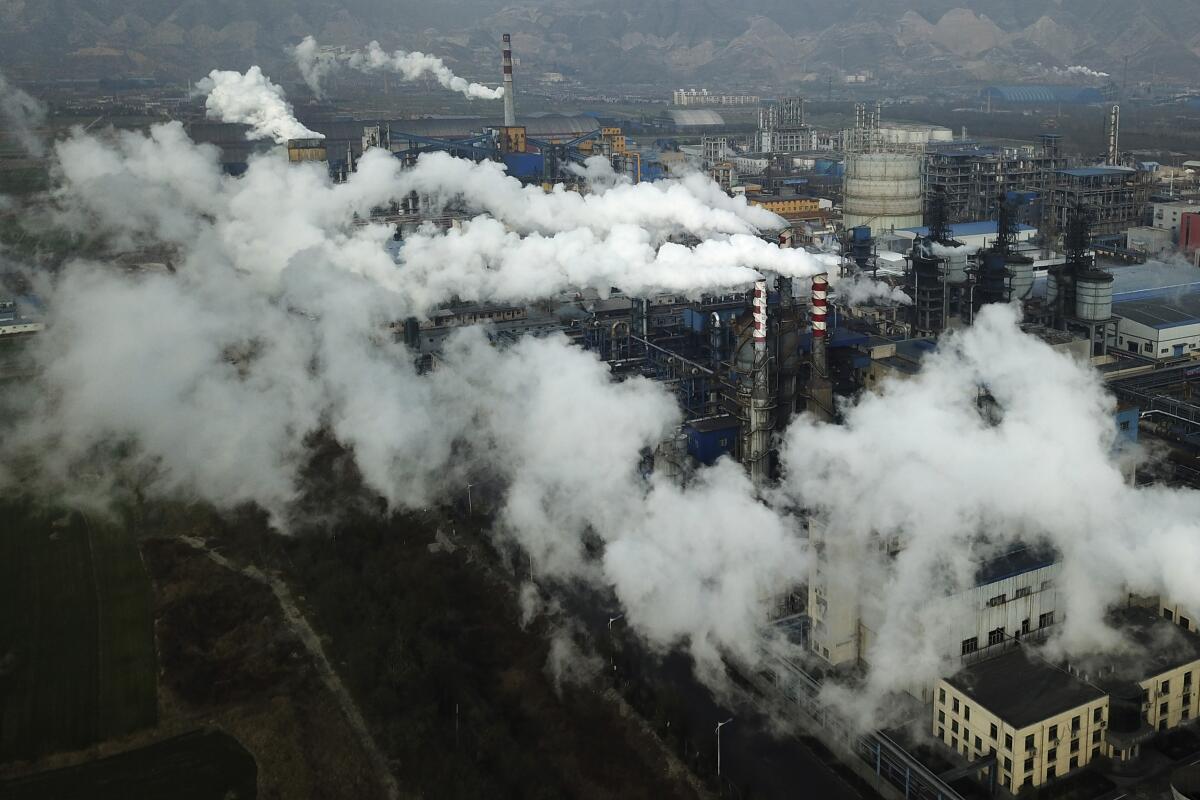Op-Ed: Driving across Iceland to visit my carbon emissions

- Share via
Last year, I went to visit some of my carbon emissions.
I flew to Reykjavik, rented a car and drove east across a series of ancient lava fields. Eventually, I got to a power plant, where, out back, was what looked like a giant air conditioner. The unit was sucking carbon dioxide out of the air and then feeding it into a pipe that ran deep underground.
Half a mile beneath the surface, the carbon dioxide was supposed to react with Iceland’s volcanic rock and turn to stone. I had paid the company that built the machine, a firm called Climeworks based in Switzerland, several hundred dollars to capture a ton of emissions and it felt oddly satisfying to imagine them, now in a solid form, buried beneath my feet. (If the carbon wasn’t mine, exactly, at least it was somebody’s!)
I was reminded of my trip to Iceland the other day when it was announced that Elon Musk was financing a $100-million prize for a breakthrough in carbon capture technology. The money will go to the team that can come up with a method for removing at least a billion tons of carbon dioxide from the air each year and then locking them away in an “environmentally benign” fashion. Officially, the contest begins on Earth Day — April 22 — and it will run for four years. I’m no Musketeer, but I’ll definitely be watching to see how this contest goes. Because if someone actually wins the $100 million, she’s going to deserve it.
Capturing carbon dioxide from the air and burying it is the exact opposite of what we’ve been doing for the last few centuries, which is digging (or pumping) fossil fuels out of the earth, combusting them, and releasing the resulting CO2 into the atmosphere. What with our power plants and our cars, our airplanes and our factories, we’ve released so much carbon — some 2 trillion tons globally since the start of the Industrial Revolution — that, according to just about every major scientific organization in the world, we are about to cross dangerous climate thresholds — if, that is, we haven’t already. And so we find ourselves caught in a dangerous cycle. To solve the problems created by our technologies, we have to invent new technologies.
The world is nowhere near meeting the targets set out in the Paris climate agreement in 2015, and even if it were, we’d still need what are known as “negative emissions.” All of which is to say if we don’t figure out how to suck carbon from the air, we are — forgive the pun — probably cooked.
The good news is that there are several ways to accomplish this. Carbon removal was pioneered by plants, which absorb carbon dioxide while they grow. (Every piece of wood in your home — and probably your house itself — contains carbon that was pulled out of the atmosphere.) The units that were processing my emissions in Iceland utilize chemicals that bind with carbon dioxide. These can then be heated to release the CO2, which then can be buried underground. Carbon dioxide also reacts with certain types of rocks to form calcium carbonate.
But it’s one thing to pull carbon dioxide out of the air and quite another to do so at a meaningful scale. Consider the arboreal approach. A newly planted forest will draw down carbon from the atmosphere until it reaches maturity. But if the trees are allowed to die and rot, they’ll release their carbon. To get around this problem, Ning Zeng, a professor at the University of Maryland, has proposed that trees be grown, harvested, and then buried in trenches. Zeng has calculated that to sequester 5 billion tons of carbon per year, 10 million tree-burial trenches would be required, each the size of an Olympic swimming pool.
Alternatively, there’s the reactive-rock approach. It’s been proposed that basalt could be mined, crushed and spread on croplands in hot, humid parts of the world. The crushed rock would absorb carbon from the air. According to a recent study by a team of German scientists, to remove a billion tons of CO2 this way, about 3 billion tons of stone would have to be dug up and ground into powder.
The Icelandic project I visited aims to remove 4,000 tons of CO2 a year by the end of 2021. This would make it the largest operation of its kind, but would still mean it was dealing with just .00001% of the world’s annual emissions, which come to around 40 billion tons. To remove a billion tons a year, you’d need something like 10 million units.
If these numbers seem daunting, it’s because they are. Still more daunting, though, is the alternative. At this point, we have so altered the atmosphere that we basically have no choice but to try to alter it in a new way.
Our goal used to be to control nature. Now, with the help of $100-million prizes, we’re hoping to control for our own control of nature.
Elizabeth Kolbert, a staff writer at the New Yorker, won the 2015 Pulitzer Prize in general nonfiction for her book “The Sixth Extinction.” Her newest book, out this month, is “Under a White Sky: The Nature of the Future.”
More to Read
A cure for the common opinion
Get thought-provoking perspectives with our weekly newsletter.
You may occasionally receive promotional content from the Los Angeles Times.










